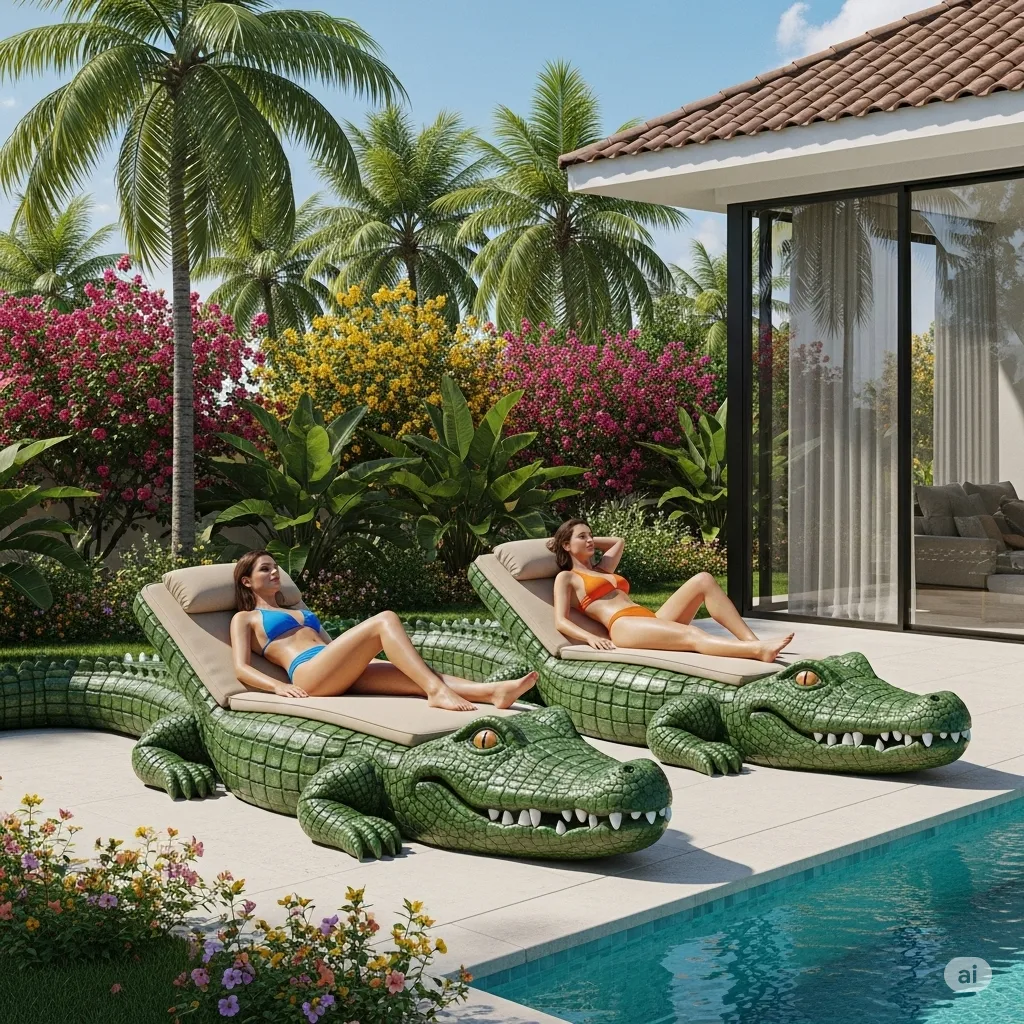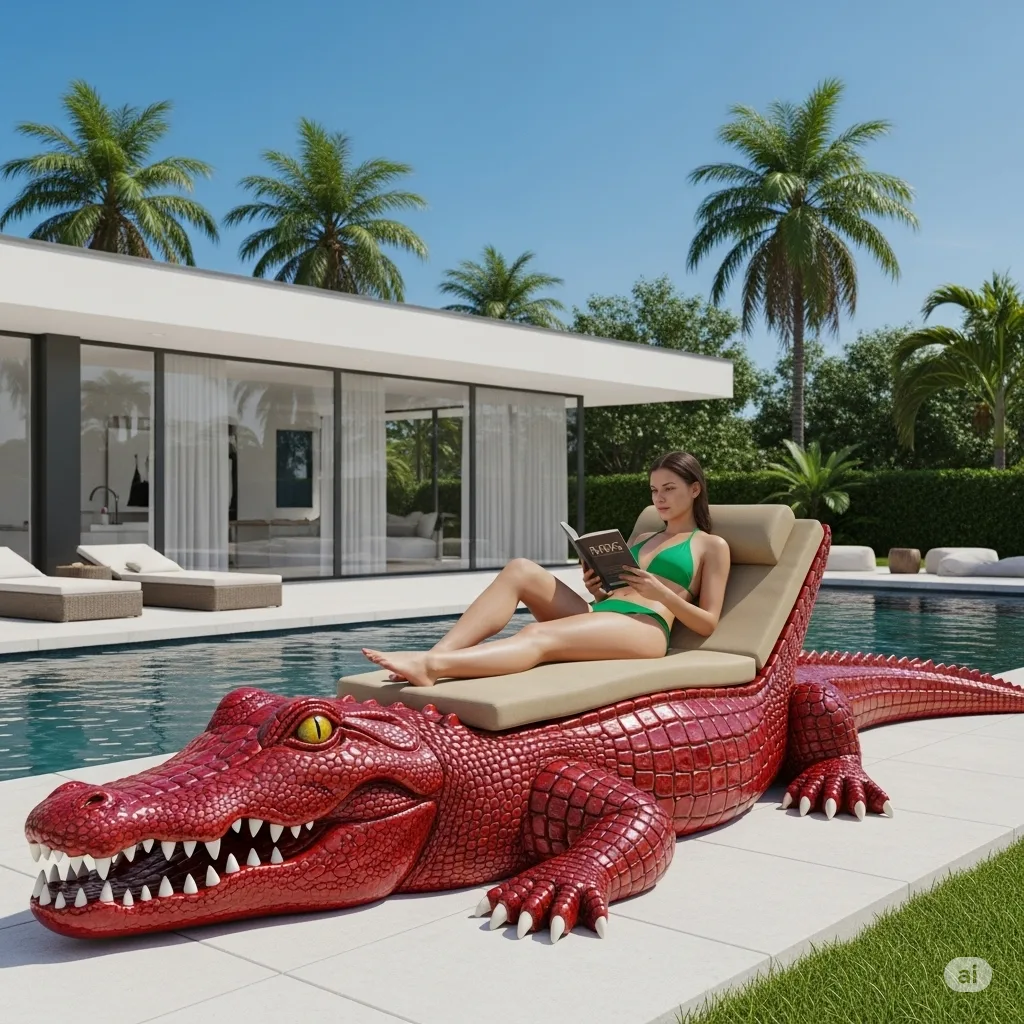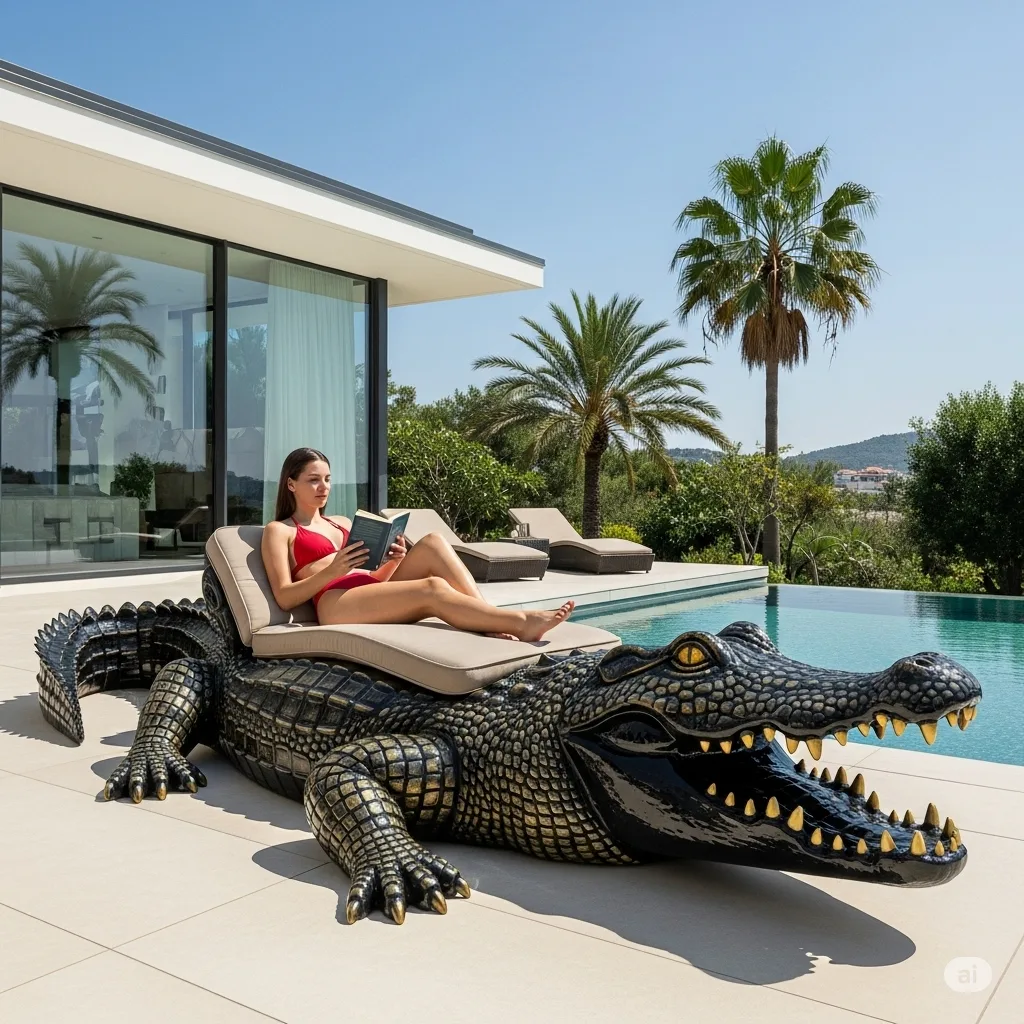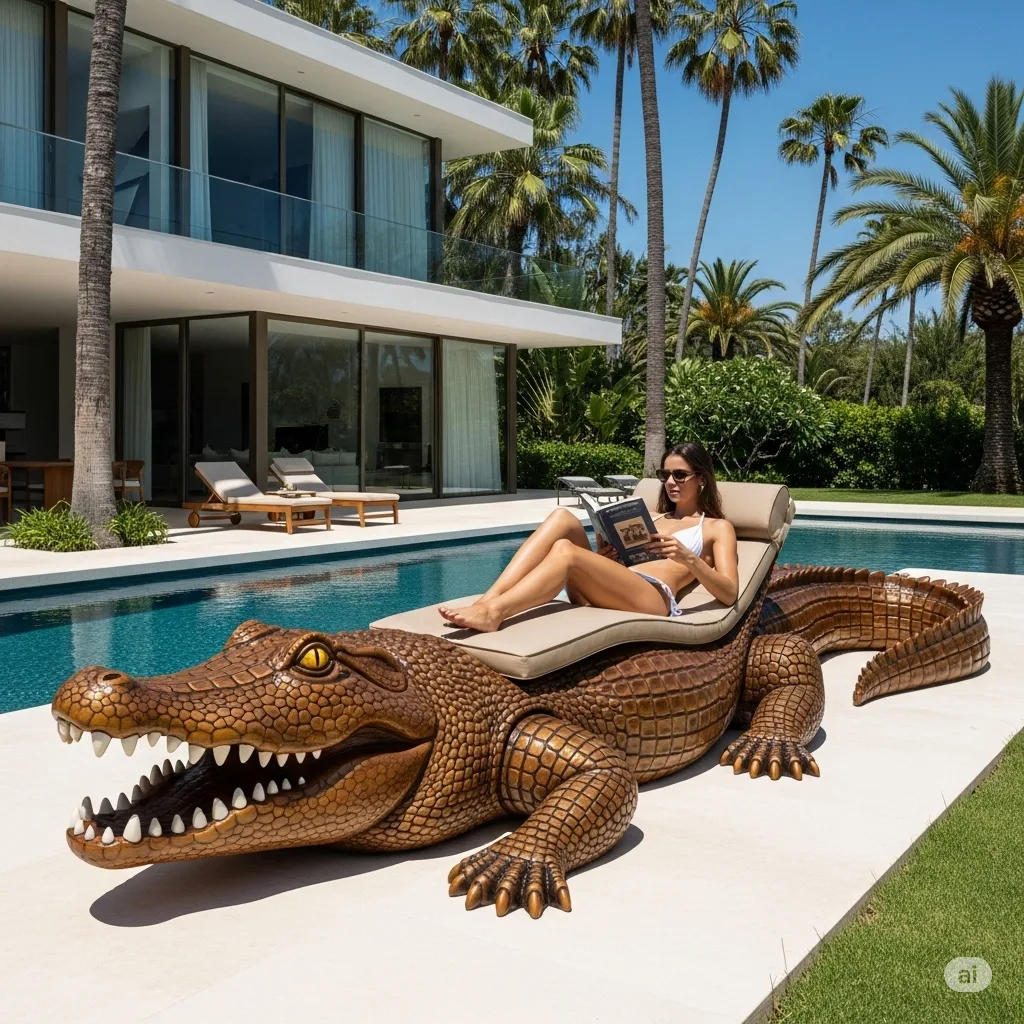Crocodile loungers are not just pieces of furniture; they are living statements of taste, elegance, and enduring comfort. For Americans in their mid-forties through their mid-sixties, the home is more than a functional space—it is a reflection of life’s achievements, values, and personal style. Crocodile loungers capture this balance between refined living and relaxed comfort. They combine the natural allure of crocodile-inspired textures with the indulgence of modern design, creating furniture that elevates every living space while also providing deep physical comfort. Over the years, these loungers have emerged as symbols of prestige, admired for their craftsmanship, durability, and their ability to merge art with relaxation. For a generation that values heritage but also seeks contemporary flair, crocodile loungers represent an irresistible harmony of past and present.
The Origins and Inspiration Behind Crocodile Loungers

The inspiration for crocodile loungers arises from the timeless fascination humans have had with nature’s most formidable creatures. The crocodile, a living relic of prehistoric times, embodies resilience, strength, and elegance in its natural habitat. Designers began to replicate the distinctive textures of crocodile hide into luxurious furnishings, using fine leathers or embossed patterns that mimic the reptile’s commanding presence. This design evolution resonated particularly with American buyers who came of age during an era that celebrated bold expression in home design. In the 1970s and 1980s, exotic textures became a sign of sophistication, and crocodile-inspired finishes made their way into the wardrobes, accessories, and eventually the homes of those who craved uniqueness.
Crocodile loungers take this concept further by merging visual allure with ergonomic comfort. They are not mere decorative chairs but long reclining seats designed for extended relaxation, perfect for reading, unwinding, or enjoying an evening with family. The design recalls a lifestyle that balances strength and serenity—much like the crocodile itself, at once powerful and at ease in its environment.
Craftsmanship and Materials That Define Excellence
Creating a crocodile lounger is no simple task. The artistry begins with a careful choice of materials, often blending premium hardwoods for the frame, supple leathers embossed with crocodile patterns, and high-density cushioning for enduring support. Skilled artisans spend weeks crafting each piece, ensuring that the embossed textures capture both authenticity and durability. Some loungers incorporate genuine exotic leathers, while others use eco-friendly alternatives that replicate the look without sacrificing sustainability.

The craftsmanship lies not only in the visible surface but also in the unseen details. Frames are often kiln-dried to prevent warping, joints are reinforced for decades of use, and reclining mechanisms are engineered to provide fluid motion without strain. For the American homeowner between forty-five and sixty-five, such attention to durability is essential. These are not disposable furnishings meant to last a few years but heirloom pieces designed to withstand decades of use, gathering stories as they are passed from one generation to the next.
Lifestyle Symbolism and Emotional Connection
For many homeowners, especially in midlife, a crocodile lounger is more than a seat; it is a personal sanctuary. It represents a reward for years of hard work, a space where one can finally relax into comfort without compromise. The crocodile texture conveys boldness and individuality, offering a statement of taste that stands apart from conventional furniture choices.

Beyond personal comfort, these loungers become symbols of status and accomplishment. To own one is to express not only refinement but also resilience—the same qualities embodied by the crocodile itself. The texture, with its rhythmic scales and natural symmetry, evokes strength and balance. Sitting in such a lounger is a daily reminder of the power of endurance, the beauty of nature, and the joy of finally reaching a stage in life where luxury and comfort are no longer opposing desires but complementary ones.
The Role of Crocodile Loungers in Modern American Homes
In today’s American homes, crocodile loungers occupy a unique niche. They appeal to those who desire interiors that are not generic but deeply personal. In suburban estates, they often sit in living rooms or private libraries as the centerpiece of design. In urban lofts, they serve as striking conversation pieces that merge exotic elegance with metropolitan modernity. For vacation homes near lakes, mountains, or beaches, crocodile loungers provide a luxurious retreat after a day spent outdoors.

This adaptability explains their growing popularity among homeowners aged forty-five to sixty-five. At this life stage, the home often transitions into a space for gathering family, entertaining friends, or enjoying peaceful solitude. Crocodile loungers enhance all these experiences. They are perfect for hosting evenings with wine and music, for curling up with a favorite novel, or for reclining in reflective quietude. Their presence elevates the room into a place not just of function but of meaning, where memories are created and preserved.
Why Crocodile Loungers Are a Must-Have Investment
Crocodile loungers represent more than furniture purchases—they are investments in lifestyle and legacy. Their durability ensures that they remain functional and beautiful for decades, making them cost-effective in the long run compared to disposable furniture. Their unique design makes them stand out as signature pieces that define the aesthetic of an entire room. For homeowners who value individuality and refuse to settle for the ordinary, they offer a sense of pride and ownership that mass-produced items cannot replicate.
For Americans in their forties, fifties, and sixties, the decision to bring a crocodile lounger into the home is often tied to life milestones. It may be a way of celebrating retirement, commemorating a career achievement, or simply rewarding oneself for years of effort. Each time one reclines into its luxurious embrace, it reinforces the idea that comfort and sophistication need not be separate goals. The crocodile lounger fulfills both effortlessly, making it a must-have for discerning homeowners who want to surround themselves with furniture that speaks to their personal journey.
Conclusion
Crocodile loungers embody the essence of refined living. They combine the strength and elegance of nature’s most enduring creature with the craftsmanship of modern artisans, creating furniture that is both symbolic and functional. For Americans aged forty-five to sixty-five, they resonate deeply with values of resilience, individuality, and timeless comfort. They are more than places to sit; they are statements of who we are, what we value, and how we choose to live in the spaces we call home. In a world where so much is temporary, a crocodile lounger offers permanence, beauty, and meaning, inviting us to recline not only in comfort but in the satisfaction of a life well lived.

